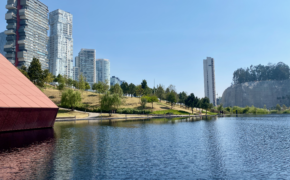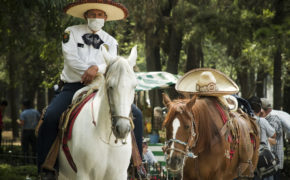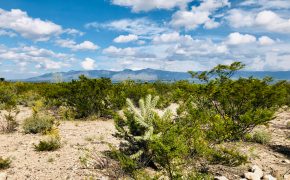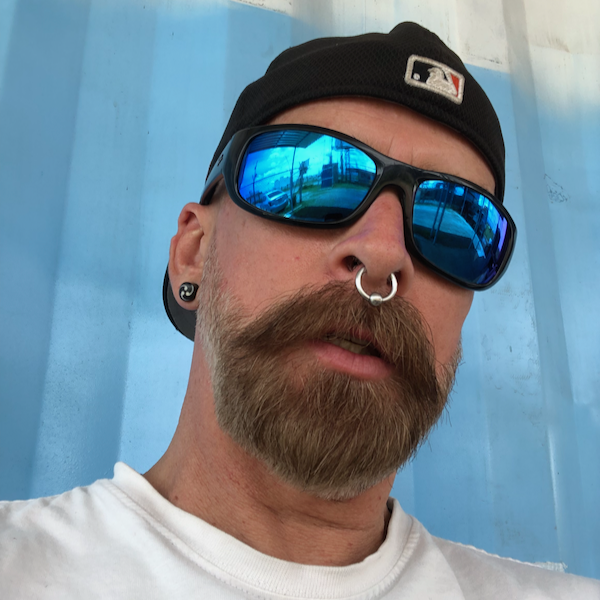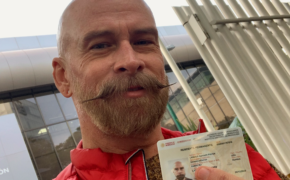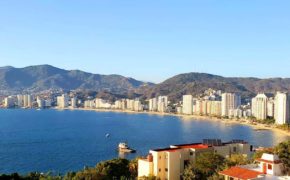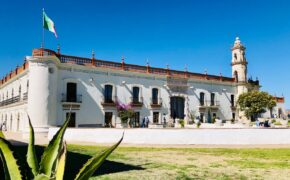A Comparison of Sacrificial Rites of Maya and Moche Cultures
When the Spanish came to America, they found fully developed, sophisticated cultures existing independent of the European worldview. As the Conquest developed, they encountered great cities of enormous wealth that delighted them for their riches. They also witnessed the grim reality of bloodletting and human sacrifice. Though the actual practices differed between the Maya and the Moche, each culture practiced such sacrifices as offerings to the gods in order to support and sustain their cultures and cosmos. The Maya depiction of bloodletting discussed herein is shown at a time of ascension by the ruler, a time when Schele and Miller say the first public act by the new ruler would be a bloodletting sacrifice to the gods (Schele and Miller, 1986, 179). Less is known for certain about Moche cosmology, but one possible explanation for the Huaca de la Luna sacrifices discussed in this paper, according to Steve Bourget, is that it occurred at a time when the Moche had to compete with sea lions for scarce food resources during a particularly strong El Niño event (Bourget, 2001, 104). Although the depictions and methods differ, the importance of bloodletting and sacrifice at such crucial times offers a compelling reason for such activities to occur, which the Spanish, in their time, could not have understood.
Perhaps the central idea in Mayan cosmology involves the duality of blood sacrifice made by the gods for the sake of man, and the same sacrifice made by man for the sake of the gods. To the Maya, “the very existence of the universe depended upon the willingness of human beings to sustain the gods with their blood offerings” (Schele and Miller, 1986, 181). In the next paragraph, Schele and Miller inform the reader that the gods, in turn, let their own blood in order to maintain the order of the Mayan culture. In discussing the centrality of this offering by the Mayan king, Christensen notes, “by piercing his penis to bring forth the flow of ‘blue’ blood, the Maya believed he sustained and nourished the land and its people” (Christensen, 1989, 82). This is the point of origin for Mayan blood sacrifice, which is rooted in the Mayan creation story of the Popul Vuh (Schele and Miller, 1986, 176).
This is precisely what is depicted in Lintel 24, from Yaxchilan, Chiapas, Mexico, which records the bloodletting sacrifice of 9.13.17.15 5 Eb 15 Mac, or October 28, 709, five days after Shield Jaguar assumed the title of Blood Lord of Yaxchilan (Christensen, 1989, 87). Here Shield Jaguar’s wife, Lady Xoc, kneels before her husband while pulling a thorn-lined rope through her freshly pierced tongue. The rope falls to a basket, which holds blood spotted paper and a stingray spine, the perforator (Christensen, 1989, 87). Though not explicitly depicted, other visual clues indicate that Shield Jaguar will also offer his own blood during this ceremony. The rope collar, in particular, is metaphorical of his spiritual bondage and his certain participation in the ritual (Christensen, 1989, 87).
The tongue, cheeks, earlobes, and genitals were frequent sources of bloodletting, which flowed into either paper or cloth and was then burned. The blood sacrifice would rise to the gods as smoke. Images of bloodletting are common in Mayan art, and were such an important aspect of the ascension to the throne that it “was the earliest kingly action to be documented in a public forum” (Schele and Miller, 1986, 179). So crucial was this ritual to the Mayan culture, “their social system required public confirmation that an individual enacted a rite at a certain time and place” (Schele and Miller, 1986, 179). This public confirmation is depicted in Mayan artistic renditions of bloodletting as such: “the image portrays the ritual and the king’s contact with the supernatural; the text records to whom, where and when this event occurred, then links this information to a chain of facts that constitute written history” (Schele and Miller, 1986, 179).
There is no doubt that the Andean Moche culture also participated in human sacrifice. In Plaza 3A at Huaca de la Luna, the remains of seventy or more victims, all sacrificed during five episodes of torrential rainfall brought about by the weather phenomena known as El Niño, were unearthed in 1995 (Bourget, 2001, 91). This site became significant as “the first archaeological evidence of large-scale sacrifice of captives by the Moche” (Verano, 2001, 117). The victims ranged in age from fifteen to thirty-nine years old, were healthy and physically active at the time of their death, and in some cases showed signs of recent injuries in the process of healing (Verano, 2001, 118). These healing injuries suggest that some passage of time had occurred between the time of capture and the sacrifice (Verano, 2001, 120). The cause of death for the victims was bleeding to death after having their throats slit with some sort of crescent-blade copper knife (Bourget, 2001, 97), or a massive blunt injury to the head by a wooden club (Verano, 2001, 119). Amidst the human remains were found sea lion remains including the canine tooth of a sea lion pup on the sternum of an individual, which had been intentionally deposited on the body (Bourget, 2001, 100).
So where did these sacrificial victims come from? Artistic renditions of Moche battle seem to suggest that Moche combat was formalized and ritual in nature (Verano, 2001, 112). They also suggest that warriors on both sides of the battle were Moche (Bourget, 2001, 93). Considering their apparent health and healed injuries at the time of their death, Verano suggests that they “could have been part of a select group of Moche males specifically trained and prepared for these ritual activities” (2001, 161). Though the taking of captives seems to have been the principle objective of this ritualized warfare, other artistic renditions confirm that capture was only the first step toward a brutal sacrificial death (Verano, 2001, 113). Verano suggests that this type of ritual warfare, along with the existence of multiple Moche ceremonial centers, may be evidence that rather than being a centralized state ruled from the Moche Valley, Moche society was composed of a number of competing royal courts (2001, 123). This would offer a plausible explanation for the apparent sacrifice of Moche warriors, rather than foreigners, at Huaca de la Luna.
Less is understood about Moche cosmology to explain why these victims were sacrificed. The absence of written records, and centuries of looting at Moche sites, confine archaeologist’s search for a reason for sacrifice to Moche art, pottery in particular. Christopher Donnan draws parallels between deer hunting and ritual warfare, suggesting these activities may be related because the same warriors, in the same ritual attire seem to be involved in both kinds of activity (1997, 58-59). He notes “the purpose for the combat was not the conquest of enemy territory, but the capture of opponents for ritual sacrifice. Similarly, the purpose of deer hunting was not to obtain food, but to capture deer for ritual sacrifice” (Donnan, 1997, 58-59). Steven Bourget draws a similar parallel between ritualized warfare and the sea lion hunt in Elizabeth Benson’s book Ritual Sacrifice in Ancient Peru (Benson, 2001, 108). Bourget, however, is not convinced, concluding “it is not possible at the moment to demonstrate that sea lions were perceived as surrogate victims and were symbolically associated with the sacrificed warriors of the plaza” (Bourget, 2001, 103).
Another possible explanation proposed by Bourget is related to sea lions and the periodic weather phenomena known as El Niño (2001, 104). He observes that during such events the Moche had to compete against sea lions for diminished resources, and that sea lions would “destroy fishing nets and poach fish in the process” (Bourget, 2001, 104). Bourget proposes in Benson’s book that the Huaca de la Luna structure, and others like it, were created “specifically for the performance of sacrificial rituals during spells of torrential rains” (Benson, 2001, 115). He continues by linking the sacrificial victims in the plaza “not only with the El Niño phenomena but also with the world of the sea and especially the killing of sea lions (Benson, 2001, 115). If all of this is true, and we probably will never really know for sure, then one could understand the sacrifices at Huaca de la Luna as appeals by the Moche to their gods to end the destructive and unusual rains associated with the El Niño weather pattern.
The research presented here demonstrates conclusively the importance of ritual sacrifice in both the Mayan and Moche cultures. Whether it is royal Mayan auto-sacrifice or Moche ritualized warfare and hunts, in each case the purpose of their sacrifice seems related to the appeasement of the gods in order to sustain and support their cosmos and their cultures. In this respect, such bloodletting and sacrifice can be understood as important aspects of the social order rather than the barbarous acts of godless savages, which has been the typical Euro-centric view of such situations in the American continents from the time of the Spanish Conquest.
Works Cited
Benson, Elizabeth and Anita Cook, ed. Ritual Sacrifice in Ancient Peru. Austin: University of Texas Press, 2001.
Bourget, Steve. “Children and Ancestors: Ritual Practices at the Moche Site of the Huaca de la Luna, North Coast of Peru.” Benson, Elizabeth and Anita Cook, ed. Ritual Sacrifice in Ancient Peru. Austin: University of Texas Press, 2001. Cited in text as Benson (the editor) due to the use of two Bourget articles from 2001.
– – -. “Rituals of Sacrifice: Its Practice at Huaca de la Luna and Its Representation in Moche Iconography.” Pillsbury, Joanne, ed. Moche Art and Archaeology in Ancient Peru. Washington: National Gallery of Art, 2001.
Christensen, Wes. “A Fashion for Ecstasy: Ancient Maya Body Modifications.” V. Vale and Andrea Juno, ed. RE/Search #12: Modern Primitives. Hong Kong: RE/Search Publications, 1989.
Donnan, Christopher B. “Deer Hunting and Combat: Parallel Activities in the Moche World.” K. Berrin, ed. The Spirit of Ancient Peru: Treasures from the Museo Arqueológico Rafael Larco Herrera. New York and San Francisco: Thames and Hudson and the Fine Arts Museums of San Francisco, 1997.
Pillsbury, Joanne, ed. Moche Art and Archaeology in Ancient Peru. Washington: National Gallery of Art, 2001.
Schele, Linda and Mary Ellen Miller. “Bloodletting and the Vision Quest.” The Blood of Kings: Dynasty and Ritual in Maya Art. New York, NY: George Braziller, Inc., 1986.
Verano, John. “War and Death in the Moche World: Osteological Evidence and Visual Discourse.” Pillsbury, Joanne, ed. Moche Art and Archaeology in Ancient Peru. Washington: National Gallery of Art, 2001.
Images
Source: Christensen, 1989, 87
Source: Christensen, 1989, 81
Image source: Bourget, 2001, 90
Source: Bourget, 2001, 92
Image source: Benson, 2001, 32
Image source: Benson, 2001, 110
Image source: Verano, 2001, 112
Image source: Benson, 2001, 107
Image source: Bourget, 2001, 102
- 10.
Image source: Verano, 2001, 114
